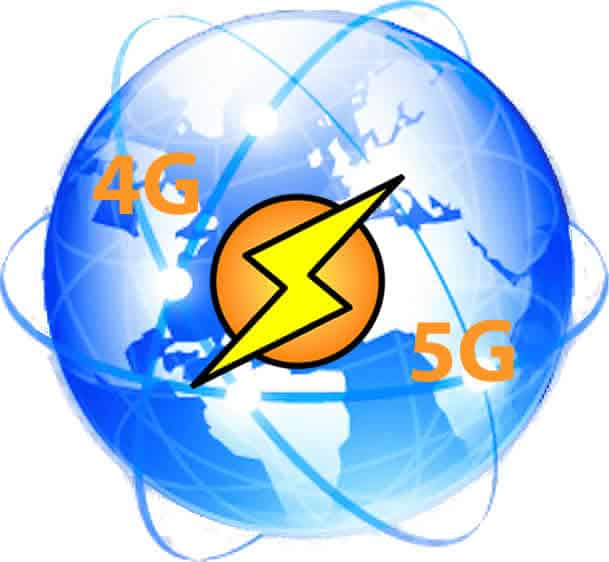5G is the latest generation of mobile data network technology, and it offers significantly faster speeds and lower latency than previous generations. If you have an Android device that supports 5G, you can activate it to start enjoying the benefits of this new technology.
To activate 5G on Android phones or tablets, you need to first be using a cellular company that provides this service. The 5G networks are communication protocols provided by a cellular telephone company. Therefore, your Android device must be configured to support 5G with an internal SIM or have a slot for a SIM card in order to access the cellular data network.
You also need to subscribe to a mobile data plan which offers the 5G network mode service. Your cellular company can get you all setup with what you need.
It is also possible that your Android device came with a SIM card pre-installed and is hidden and cannot be removed. Or if you purchased your Android phone directly from a cellular service company, then no SIM card is needed, the Android device is likely hard-wired to work only with that cellular provider.
How to activate 5G on Android
To activate 5G on your Android device, follow these steps:
- Make sure that your Android device is running the latest software version.
- Check with your carrier to make sure that your mobile data plan supports 5G.
- Open the Settings app on your device.
- Touch Network & internet.
- Touch Mobile network.
- Touch Preferred network type.
- Select 5G/LTE/3G/2G.
- Your device will now automatically connect to the 5G network if one is available. If a 5G network is not available, your mobile device will automatically step down to a LTE service.
You can use the quick access menu to activate your mobile data:
- Swipe down on the screen of your Android phone or tablet
- Look for the Mobile data icon
- Touch on the Mobile data icon to turn mobile data on, Touch again to turn it off.
Troubleshooting:
If you are having trouble activating 5G on your Android device, try the following:
- Restart your device.
- Check your carrier’s website for support information.
- Contact your carrier for help.
Additional tips:
- Make sure that you are in an area with 5G coverage. You can check your carrier’s website or use a coverage map app to see if you are in a 5G coverage area.
- Some Android devices may have a dedicated 5G switch. If your device has this switch, make sure that it is turned on.
- Make sure that your Android device is running the latest software version.
- Check with your carrier to make sure that your plan supports 5G.
- Try restarting your device.
- If you are still having trouble activating 5G, contact your carrier for help.
Comparison chart for LTE (4G) vs 5G on Android:
| Feature | LTE (4G) | 5G |
|---|---|---|
| Peak download speed | 100 Mbps | 10 Gbps |
| Peak upload speed | 50 Mbps | 1 Gbps |
| Latency | 50 ms | 10 ms |
| Capacity | 1 million devices per square kilometer | 10 million devices per square kilometer |
| Coverage | Global | Growing rapidly |
Advantages of 5G over LTE
- Faster speeds
- Lower latency
- More capacity
- Better coverage
Disadvantages of 5G over LTE
- Higher cost
- Shorter battery life
- Less device support
Overall, 5G is a significant improvement over LTE in terms of speed, latency, capacity, and coverage. However, it is also more expensive, has shorter battery life, and less device support.
Which one should you choose?
If you are looking for the fastest possible speeds and the lowest possible latency, then 5G is the best choice. However, if you are on a budget or if you don’t need the fastest speeds, then LTE is still a good option.
Here are some additional things to consider when choosing between LTE and 5G:
- Your carrier’s coverage area: Not all carriers have 5G coverage everywhere yet. Check your carrier’s website to see if 5G is available in your area.
- Your device’s support: Not all Android devices support 5G. Check the manufacturer’s website to see if your device supports 5G.
- Your needs: If you don’t need the fastest possible speeds or the lowest possible latency, then LTE is still a good option.
Benefits of 5G
5G offers a number of benefits over previous generations of mobile network technology, including:
- Faster speeds: 5G can offer speeds that are up to 100 times faster than 4G LTE. This means that you can download movies and TV shows in seconds, and stream high-definition video without buffering.
- Lower latency: 5G has lower latency than 4G LTE, which means that there is less delay between sending and receiving data. This is important for online gaming and other real-time applications.
- More capacity: 5G can support more devices and more traffic than 4G LTE. This means that you will be less likely to experience congestion, even in crowded areas.
If you have an Android device that supports 5G, I encourage you to activate it so that you can start enjoying the benefits of this new technology.
Frequently asked questions and answers for activating 5G on Android:
Q: What is 5G?
A: 5G is the fifth generation of cellular network technology. It offers significantly faster speeds and lower latency than previous generations.
Q: How do I know if my Android device supports 5G?
A: Check the manufacturer’s website to see if your Android device supports 5G. You can also check the Settings app on your device to see if there is a 5G option under Network & internet > Mobile network > Preferred network type.
Q: I’m having trouble activating 5G on my Android device. What should I do?
A: If you are having trouble activating 5G on your Android device, try the following:
- Restart your device.
- Check your carrier’s website for support information.
- Contact your carrier for help.
Common problems and solutions for activating 5G on Android:
Problem: Your Android device is not supported for 5G.
Solution: Check the manufacturer’s website to see if your Android device supports 5G. If it does not, you will need to upgrade to a new device.
Problem: Your carrier does not offer 5G service in your area.
Solution: Check your carrier’s website or use a coverage map app to see if 5G service is available in your area. If it is not, you will need to wait until your carrier expands its 5G coverage area.
Problem: Your Android device is not running the latest software version.
Solution: Check for software updates on your Android device. If an update is available, install it.
Problem: Your Android device is not connecting to the 5G network.
Solution: Try restarting your device. If you are still having problems, check with your carrier for support.
Problem: Your Android device is connected to the 5G network, but you are not experiencing faster speeds.
Solution: Try moving to a different location. 5G coverage can vary depending on your location. You may also want to try restarting your device.
If you are still having problems activating 5G on your Android device, contact your carrier for help.
Conclusion
Activating 5G on your Android device is a quick and easy process. Once you have activated 5G, you can start enjoying the benefits of this new technology, such as faster speeds and lower latency.
Additional information:
If you have a new phone, then read this on how to setup a new Android phone. How to Setup a New Phone?




